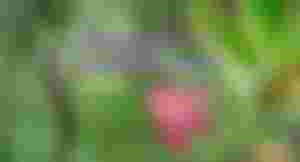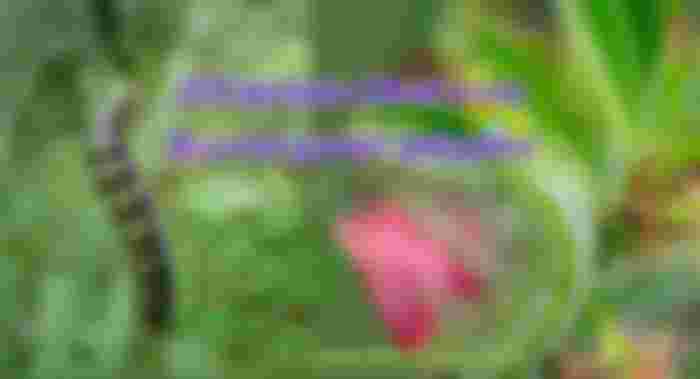What are pests on plants?
They are all those animals that take advantage of both the sap, bark, leaf and roots of plants as a means of feeding and reproduction, attracting more harmful animals for their free and healthy development.
These animals that spend the night in the plant tend to transmit diseases or leave larvae that feed on all the resources necessary for them to survive. These animals and microorganisms cause so much damage to plants that if they are not controlled in time it can cause degeneration or death.

Pests that attack the floors
1 -Doradillo or Larva of the thunder beetle
The eggs and larvae of the thunder beetle, also known as the cocuyo, broad or carbunco. These beetles are easy to see thanks to their characteristic luminescence of their species.
This beetle does not do any damage to the leaves, but its eggs do, since you deposit the eggs on the ground and when they hatch they become larvae that destroy the roots.
2 -Worms
When this type of pest grows, it feeds on the germinated seed or the soft roots of the seedling. Thus managing to weaken it until it gradually withers.
3 -Beetle and weevil larvae
Also known as hairy worms, these caterpillars attack both the roots when they are still small, and the leaves when they are growing. These types of larvae are products of some insects such as the skin beetle.
4 -Root caterpillars
These caterpillars can come from various insects that we have, beetles, butterflies and flies that attack crops. This is because insects in summer lay their eggs on the ground and these begin to hatch and develop in winter when it is mostly the sowing seasons.
5 -Caterpillars
All these types of caterpillars eat both the leaves and the bark of the plants, that is why all of them are considered pests or harmful species for the garden.
6 -Red beetle
These are beetles that pierce the leaves, flowers and even the fruits of food plants, it is also known as the red pumpkin beetle or red weevil.
7 -Mexican bean beetle
This beetle resembles the ladybug but is more destructive, as it attacks plant leaves directly. This pest is found on food plants such as beans and all legumes. Both the beetle and its larvae feed on the flowers, leaves and sometimes the tender fruit of these. These coleopterans are identified by their pale red or orange colors, they also have black spots on their exoskeletons that make them confused with ladybugs.
8 -Japanese beetle
The Japanese beetle or Popilla japonica is an insect native to Asia, but it has currently spread to America and Europe. This pest attacks ornamental plants and lawns, rarely attacks garden crops, although it cannot be ruled out as pests of food plants.
9 -Spotted beetle
Both the adult beetles that can chew the leaves, as well as the larvae of the same that damage the roots, can end up putting an end to your plantings. That is why you must identify it in time to be able to eradicate them.
10 -Chapulines or grasshoppers
These insects are natural chewers and can consume the entire leaf in just one day, grasshoppers, grasshoppers or crickets are of different colors, you can identify them by their light or dark brown color and their huge and long hind legs.
11 -Snails and Slugs
Although they seem harmless, these two plagues of the same family can cause one irreversible damage to your plants, because apart from chewing the leaves, also secrete a slimy film that can become a fungus disease.
12 -Burner beetle
Also known as coco, this type of bedbug also chews and damages the leaves of your plants, mainly the food ones, in addition to transmitting diseases caused by fungus. The eggs of these bed bugs when they hatch develop into larvae that eat leaves, bark and roots of plants.
13 -Striped cucumber beetle
It belongs to the speckled beetle family, it also attacks mainly food plants such as cucumber, pumpkin, watermelon, melon, zucchini, tomato, spinach, chili peppers, corn and some legumes.
14 -Aphids
The Aphids are insects phytopathogenic tiny attacking all s plant species, both gardening and orchards. But the size is not an impediment to damage to the bushes and the greatest damage caused is due to the fact that they attack in groups and suck the sap from the leaves and stem, until they wither or weaken the herbs.
15 -Mites
They are tiny insects that can only be detailed with a magnifying glass, these pests are carried by birds and other insects and lodge in the plant to extract the sap from the leaves and stems.
Both mites as Conchuelas tend to deform both s plants and fruits, since the extract nutrients these degenerate. When you come to appreciate the attack of this type of pests on plants, it is because they are already spread on all leaves and stem.
16 -Woodlouse
This pest attacks in groups and the females can lay up to 400 eggs and when these hatch they feed on the stem and leaves, when the mealybug affects your crops, they can wither, dry or deform plants, fruits and flowers.
The mealybug, due to its hard structure of the shell, sometimes becomes immune or difficult to eliminate with insecticides, that is why sebum is often used with pesticides to combat them.
17 -White fly
The whitefly is actually beige and only its wings are white or a kind of pearly color, they also call it a moth, this fly apart from sucking the sap from the leaves also attracts more pests and fungi that can damage your plant.
18 -Red spider
In reality, the red spider is not from the Araneae family but rather is a mite that with evolution has managed to copy the way of weaving webs. This pest is usually fought with the same remedies that are used for mites and must be done in time, since the attack of this type of pest can bring fungal diseases.
Among other common pests we have
Lace insects
Membracis foliata (L.)
Harlequin
Cidracayote insects or Vine borers
Thysanoptera
Corn borer
Leaf borer
Butterflies
Ants
Termites
¿ How to combat pests in plants?
Among the pest control methods we have:
Use of insecticides or inorganic or chemical products. Industrial pesticides are used in aerosol form and applied directly to plants with due care.
Use of natural enemies as a means of control. For these you must know the natural enemies of each pest and introduce them into your garden.
Organic products and remedies. It is enough to know the plants such as citronella and nimbus that can serve as natural insecticides.
Insect traps. They are lamps that are placed near the plantation to attract insects and later eliminate them.
Pheromones. Also known as pheromone traps, which consists of using the characteristic mating smell so that the insects go to the trap and thus be able to eliminate them.
Thanks for reading, this article is an adaptation of my article in Spanish 29 plagas que atacan las plantas and it is translated by Google translate
